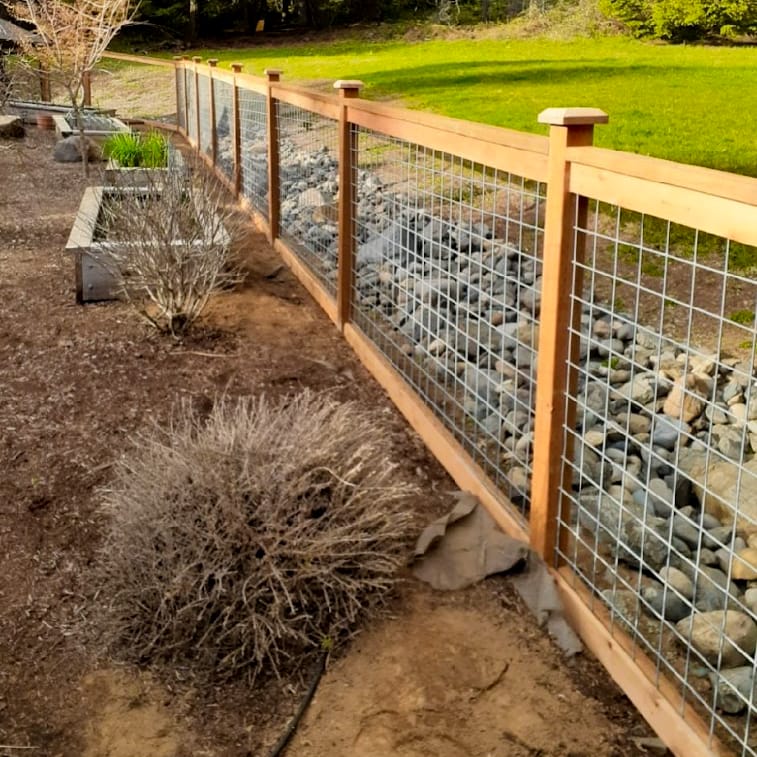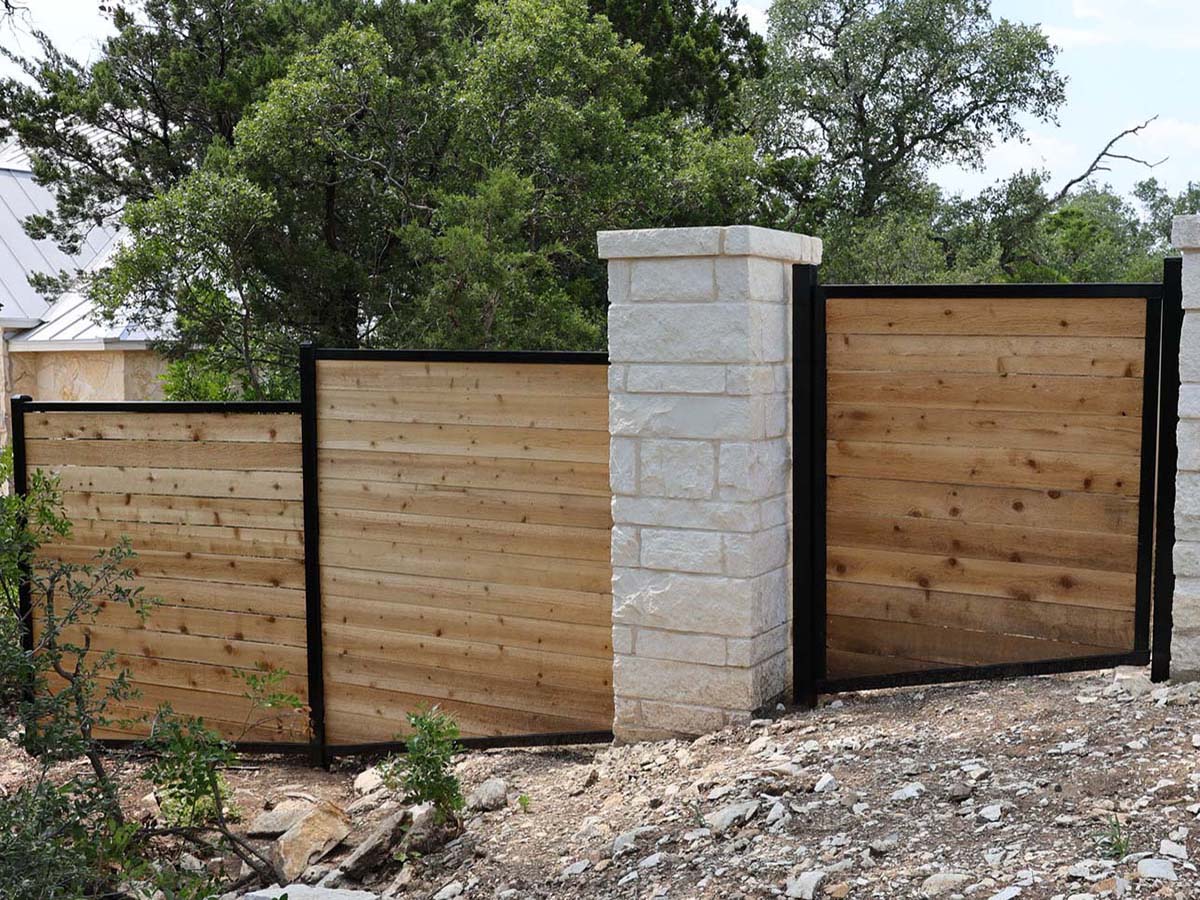All Categories
Featured
An appropriately chosen fence can act as a powerful deterrent against invaders and boost the overall protection of your home or company. Choosing the right elevation includes a number of variables, including neighborhood policies, your particular security demands, and the kind of fence you are considering.
![]()
In many cases, homeowners may need an authorization to construct a fencing over a specific height. To avoid legal problems or penalties, constantly get in touch with your local authorities before proceeding with installation. Additionally, if you stay in a community governed by a home owners' association (HOA), be sure to review their guidelines, as they may have details policies regarding fencing height and layout.
In more risky areas, or if you have valuable property or are dealing with security issues, you may intend to take into consideration an also taller fencing-- approximately 8 feet or greater. A taller fencing is a lot more daunting to potential trespassers and uses a far better physical barrier. If you desire to go even further, consider adding safety and security features like razor wire, electric fencing, or sharp latticework tops, which can make the fence a lot more difficult to violation.
Wood Fencings: Wood fences offer privacy, yet they can be fairly simple to climb. A height of 6 to 8 feet is recommended for sufficient safety. To increase prevention, take into consideration adding sharp tops or installing a trellis with climbing plants. Wrought Iron Fences: Wrought iron fences are difficult and tough to climb up. They're often used for higher-security purposes and can be developed in between 6 to 8 feet tall. The upright bars, particularly when covered with spikes or points, act as a powerful barrier. Chain-Link Fences: A chain-link fencing that's 6 to 8 feet tall can give a cost-effective and practical solution. Adding features like barbed cable or razor cable at the top can increase safety significantly. Vinyl Fencings: Vinyl fencings can also offer privacy and safety and security, yet like wood fences, they might need added elevation and includes to avoid climbing. A solid plastic fence of 6 to 8 feet in elevation can be very efficient at maintaining undesirable site visitors out. 4. Privacy vs. Security. If your primary issue is privacy, a taller, strong fence (like timber or plastic) might be the most effective alternative. Taller fencings obstruct the view from the outside, making certain that burglars can not conveniently assess your residential or commercial property or area belongings. Privacy fences of 6 to 8 feet are typical for this function.
Nevertheless, if safety and security is even more of an issue than personal privacy, you may wish to choose a fence product that gives exposure, such as chain-link, while still being high enough to hinder climbing up. The advantage of this strategy is that it enables you to watch on activity outside your residential property and make it a lot more challenging for someone to approach unnoticed.
![]()
Anti-Climb Attributes: Mounting anti-climb spikes or trellis extensions at the top of your fencing will make it much more hard for burglars to scale it. These can be particularly effective on wood or vinyl fences. Razor Cable or Barbed Cable: If security is a significant concern, adding razor cord or barbed cable to the top of your fencing is a highly effective deterrent. These attributes can be integrated with a strong wood or chain-link fencing for maximum defense. Electric Fence: For heightened security, electric fencing can be set up on top of an existing fencing. While these require special installment and a specialist to make sure safety, they can be very reliable in protecting against unauthorized access to your home. 6. Visual Factors to consider. While security is the key objective, it's likewise important to think of exactly how the fence will look. Some communities or areas may have aesthetic requirements or HOA standards, so selecting a fencing that matches your residential property's design while still giving safety is crucial. Choosing a fencing that mixes into the setting and fits the architectural design of your home can ensure that your fence is both useful and aesthetically enticing.
Verdict. When choosing a fencing elevation for optimum safety, purpose for an equilibrium in between height, product, and extra safety and security features to ideal meet your needs. A height of 6 to 8 feet is usually adequate for most domestic properties, however if you live in a high-risk location or have specific safety and security issues, taller fencings with included attributes like spikes or electrical systems might be essential.
- Understand Neighborhood Legislations and Rules. Before you spend in a brand-new fence, it's vital to understand the regional zoning regulations and structure codes that might dictate the maximum elevation for surround your area. Several districts have limitations on the height of fences, especially for front lawns, where fencings are usually limited to 3 to 4 feet. In yards, however, you may be enabled to build taller fences, commonly varying from 6 to 8 feet.

In many cases, homeowners may need an authorization to construct a fencing over a specific height. To avoid legal problems or penalties, constantly get in touch with your local authorities before proceeding with installation. Additionally, if you stay in a community governed by a home owners' association (HOA), be sure to review their guidelines, as they may have details policies regarding fencing height and layout.
- Consider the Level of Protection You Required. The elevation of your fencing straight correlates with the level of safety and security it provides. A fence that's too brief may be easy to climb up over or bypass, making it inadequate in maintaining out trespassers. For greater safety and security, purpose for a fencing height of a minimum of 6 feet, which is typically adequate to stop most individuals from conveniently scaling it.
In more risky areas, or if you have valuable property or are dealing with security issues, you may intend to take into consideration an also taller fencing-- approximately 8 feet or greater. A taller fencing is a lot more daunting to potential trespassers and uses a far better physical barrier. If you desire to go even further, consider adding safety and security features like razor wire, electric fencing, or sharp latticework tops, which can make the fence a lot more difficult to violation.
- Pick the Right Fencing Material. Various fencing products offer differing degrees of security, and the height of the fence must be matched with the material's sturdiness. For example:
Wood Fencings: Wood fences offer privacy, yet they can be fairly simple to climb. A height of 6 to 8 feet is recommended for sufficient safety. To increase prevention, take into consideration adding sharp tops or installing a trellis with climbing plants. Wrought Iron Fences: Wrought iron fences are difficult and tough to climb up. They're often used for higher-security purposes and can be developed in between 6 to 8 feet tall. The upright bars, particularly when covered with spikes or points, act as a powerful barrier. Chain-Link Fences: A chain-link fencing that's 6 to 8 feet tall can give a cost-effective and practical solution. Adding features like barbed cable or razor cable at the top can increase safety significantly. Vinyl Fencings: Vinyl fencings can also offer privacy and safety and security, yet like wood fences, they might need added elevation and includes to avoid climbing. A solid plastic fence of 6 to 8 feet in elevation can be very efficient at maintaining undesirable site visitors out. 4. Privacy vs. Security. If your primary issue is privacy, a taller, strong fence (like timber or plastic) might be the most effective alternative. Taller fencings obstruct the view from the outside, making certain that burglars can not conveniently assess your residential or commercial property or area belongings. Privacy fences of 6 to 8 feet are typical for this function.
Nevertheless, if safety and security is even more of an issue than personal privacy, you may wish to choose a fence product that gives exposure, such as chain-link, while still being high enough to hinder climbing up. The advantage of this strategy is that it enables you to watch on activity outside your residential property and make it a lot more challenging for someone to approach unnoticed.
- Enhancing the Safety with Added Attributes. The elevation of your fence is just one aspect of your overall protection strategy. Think about integrating extra attributes to enhance its effectiveness:

Anti-Climb Attributes: Mounting anti-climb spikes or trellis extensions at the top of your fencing will make it much more hard for burglars to scale it. These can be particularly effective on wood or vinyl fences. Razor Cable or Barbed Cable: If security is a significant concern, adding razor cord or barbed cable to the top of your fencing is a highly effective deterrent. These attributes can be integrated with a strong wood or chain-link fencing for maximum defense. Electric Fence: For heightened security, electric fencing can be set up on top of an existing fencing. While these require special installment and a specialist to make sure safety, they can be very reliable in protecting against unauthorized access to your home. 6. Visual Factors to consider. While security is the key objective, it's likewise important to think of exactly how the fence will look. Some communities or areas may have aesthetic requirements or HOA standards, so selecting a fencing that matches your residential property's design while still giving safety is crucial. Choosing a fencing that mixes into the setting and fits the architectural design of your home can ensure that your fence is both useful and aesthetically enticing.
Verdict. When choosing a fencing elevation for optimum safety, purpose for an equilibrium in between height, product, and extra safety and security features to ideal meet your needs. A height of 6 to 8 feet is usually adequate for most domestic properties, however if you live in a high-risk location or have specific safety and security issues, taller fencings with included attributes like spikes or electrical systems might be essential.
Latest Posts
Join WyHy FCU – Key Advantages for Your Money Goals
Published May 26, 25
1 min read
Check Out Cost-Effective Auto Repairs with Montclare’s Limited-Time Service Specials
Published May 24, 25
1 min read
Grab Limited-Time Auto Repair Offers in Chicago at Montclare Auto Repair
Published May 22, 25
1 min read
More
Latest Posts
Join WyHy FCU – Key Advantages for Your Money Goals
Published May 26, 25
1 min read
Check Out Cost-Effective Auto Repairs with Montclare’s Limited-Time Service Specials
Published May 24, 25
1 min read
Grab Limited-Time Auto Repair Offers in Chicago at Montclare Auto Repair
Published May 22, 25
1 min read